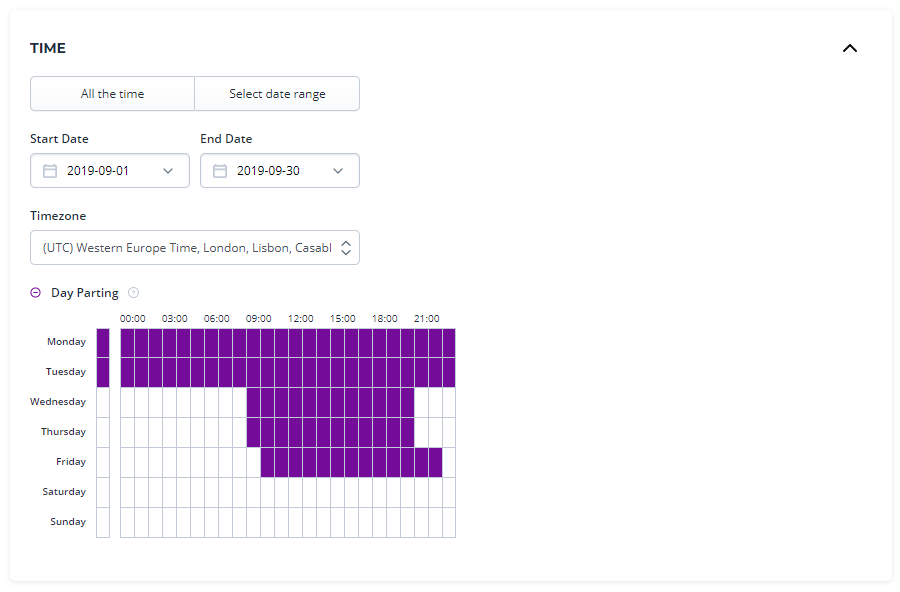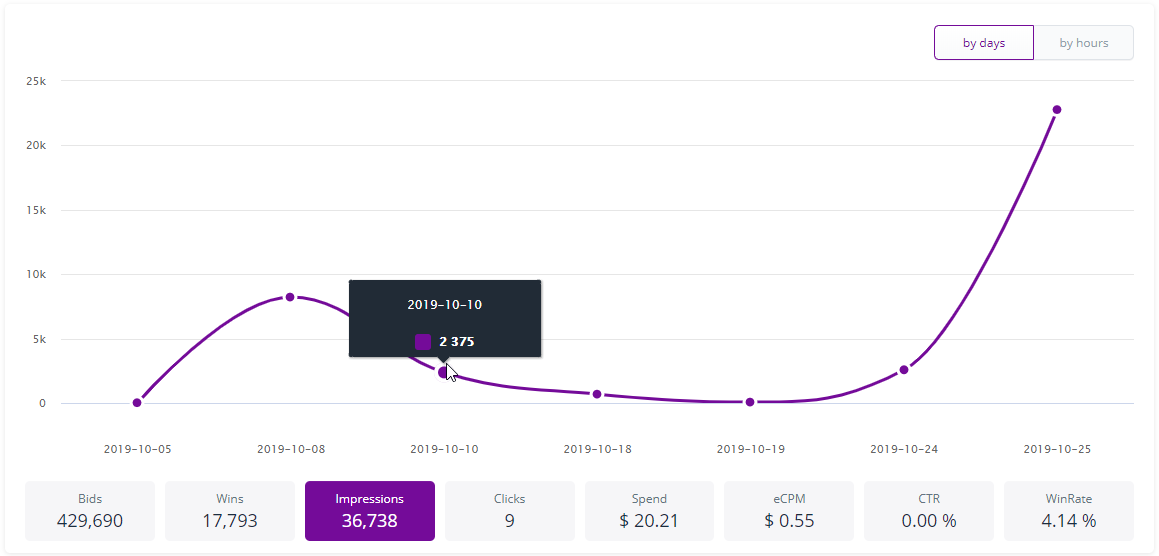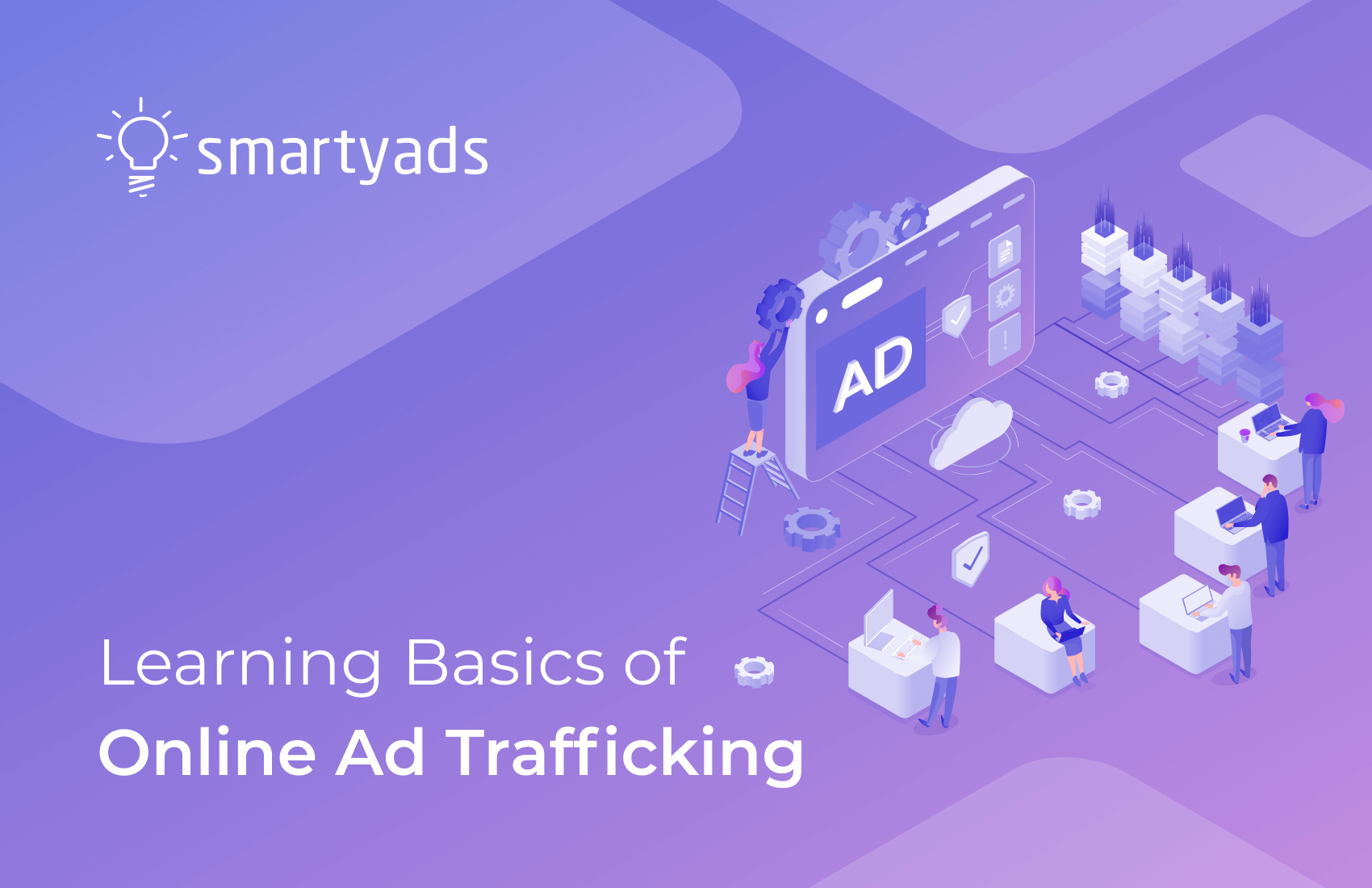Approximately 60.3% of businesses allocate a minimum of $200 per month for media planning, excluding expenses related to ad creation and distribution.
What is trafficking in digital marketing, and what elements does it include aside from the above-mentioned processes? Its role is really tremendous; if a company does not plan its advertising campaign in advance, its promotional efforts are often chaotic and random, which can reduce its effectiveness by up to 50% and double the advertising expenses.
Agencies attract ad ops and other kinds of employees that create placements, support effective media distribution, and use different ad trafficking tools to organize workflow essential for the success of advertising campaigns. So, how do you learn the specifics of the digital trafficking process, and is it possible to master it without agency?

What is online ad trafficking?
Ad trafficking definition is complex because it includes ad campaign planning management, coordination, and optimization stages.
For instance, media planning is a detailed plan for conducting an advertising campaign. It specifies communication channels, timelines, conditions for targeting the audience, budget, expected results, and other details.
It is easier to understand what online ad trafficking is if you look at it as a strategy and workflow whose purpose is to select the ad placements that could potentially bring the best benefits for the advertiser.
Ad trafficking workflow
So, what is trafficking in advertising? This process constitutes a lot of planning, followed by step-by-step campaign execution: contacting the vendors, negotiating the price per impression, scheduling ad time, etc.
For instance, there are three stages of the media buying process that trafficking in marketing includes, and professionals always stick to them. The same applies to other important advertising processes.
According to global advertising practices, companies plan advertising activities after developing their annual budget. The workflow normally follows several core steps:
Research and pre-campaign planning
Before trafficking ads, the brand engages with an agency or hires in-staff marketers who conduct advertising research in areas such as studying the marketing situation and analyzing the initial competitive conditions in the market or segment.
Marketers or agencies usually determine the target audience persona and the list of products and services to be advertised.
Crafting media plan
In a media plan, marketers outline the specific results they aim to achieve while promoting a product or service via various marketing channels and what purposes, objectives, and KPIs need to be achieved.
There are two major types of campaigns in ad tech trafficking: performance marketing and brand awareness campaigns.
When the advertiser wants the user to buy a product or service (or to perform a certain action), they choose performance ad campaigns (normally, it is a cost-per-click model). If the purpose is to raise the initial awareness of the product or service, then cost-per-mille is chosen, and the marketer measures effectiveness according to brand awareness KPI.
Marketers formulate the goals of the planned advertising campaign and which mar tech, ad tech, and analytical tools they will be using to automate and measure campaigns.
Developing a creative strategy
This stage can also be delegated to the agency or performed by in-house marketers and designers. A creative advertising strategy is developed: the concept and the main grand idea of the advertising campaign.
Marketers choose the tools for advertising distribution, the advertising frequency, and the timing of placing the advertisements.
They also determine the amount of funds that can be allocated for advertising and adjust the advertising campaign plan accordingly.
Advertising budgets are allocated for each ad channel.
Let's assume that a brand can allocate $500 for a campaign on Facebook and Instagram and $500 for advertising on programmatic advertising platforms. Therefore, the total budget would be $1000. This approach allows for the careful allocation of the required amount of money, ensuring that the expenditures stay within the established limits.
Choosing the tool (platform for advertising)
Now that we’ve determined what is trafficking in advertising, it’s time to find out the role of real-time bidding (RTB) in automating ad buying.
The demand-side platform automates a great part of manual work; after the campaign is set, the bidding happens according to the pre-configured settings.
The AI algorithm at the core of the platform analyzes targeting, budget, and other campaign requirements and makes a decision based on them — whether to bid or not on a certain impression. If the impression suits requirements, the system bids on it in the auction; if the bid wins, the ad servers deliver the ad to the publisher’s website.
This way, thanks to the RTB algorithm, DSP removes the work associated with direct negotiations, media selection, scheduling, and price formation. Still, it can be right to say that DSP is only a tool that, in the right hands and with the right configurations, can help you achieve incredible ad campaign efficiency.
Choosing creative format
The ad creative itself can influence the memorability of the ad message by more than 70%, so it will be a good practice to follow the best display ad examples during advertising trafficking.
Before starting the campaign trafficking, the company has to develop the creative according to the channel where ads will be placed. The most effective standard banner ad sizes are supported by desktop, mobile web, and in-app ecosystems.
At the same time, these days, brands are not limited by standard formats and user experiences as there are novel immersive mediums like connected TV, audio ads, and digital out-of-home billboards that effectively capture the attention of audiences.
Setting up campaigns
Thanks to automated ad platforms like the demand-side platform, the brand can precisely determine when the advertising campaign will start, how long it will last, and when it will stop.
Once the strategy is in place, the marketer can register at DSP, set up targeting parameters, allocate budgets, and launch ad campaigns. The platform will automatically bid on the most suitable impressions, and the ads will be served to the right audiences. Read more about the demand-side platform and its functions.
Aside from those settings, during media trafficking, marketers can also use tracking pixels and ad tags. For example, on SmartyAds DSP, you can track conversions through third-party tags such as conversion Pixel or Postback. Additional ad tags for creatives will allow marketers to track more precisely how effective the user’s interaction with chosen creatives is.
Campaign optimization and analytics
Marketers need to evaluate the effectiveness of the advertising campaign every week in order to make sure that everything goes according to plan.
For example, if the funds are insufficient, marketers can modify the frequency of ad placement or apply CPM auto-optimization, ML-driven options available on the platform.
Don’t forget to analyze all channels that you are using for advertising. For example, track from which devices customers interacted with the advertising, identify the most effective creatives on social media, monitor which keywords in contextual advertising generated more clicks, and so on.

5 do’s and don’ts of trafficking advertising
Do:
Align details
If you don’t work with programmatic platforms, make sure that the line item data matches the data that gets into the ad server (creative, targeting options, and other details).
Choose the best timing
Keep track of traffic fluctuations — ups and downs during the holiday seasons in order to schedule campaigns for the most advantageous period.
Test campaigns
Run A/B tests to choose the most optimal option between the two — e.g., ad creative type and size, etc.
Keep track of the campaign
Always check the campaign a few hours after the launch to make sure it works properly and produces impressions and clicks.
Use reports
Check and optimize campaigns every week or two. In the DSP dashboard, you can generate reports automatically across selected metrics.
Don't:
Set it by default
If you work with automated media-buying platforms, never choose settings by default; find out how they can affect your campaign outcomes or consult a professional.
Set it to autopilot
What does trafficking mean in advertising? It means a proper combination of automation and human touch. It is not enough to just activate the campaign and wait till it ends. Revise the performance regularly to apply timely optimization and correct the campaign course.
Select creatives blindly
Don’t fall into common misconceptions about creative formats, sizes, and performance. Ensure you choose an ad unit that fits a selected digital environment, doesn’t interfere with user experience, and doesn’t cause ad fatigue.
Show ads as much as possible
Don’t overwhelm users with ads unless you want to cause irritation; select the right advertising frequency per user to limit the number of impressions per day.
Narrow targeting too much
Targeting helps you to show ads only to the relevant audiences, but when you apply too many targeting options, you risk narrowing down your potential audience to zero.
How to organize a digital ad trafficking process?
What is media trafficking on DSP? Who can organize it? Programmatic trafficking on DSP is easier than manual work because the ad placement is performed by the platform automatically (according to campaign settings). You can create a DSP account on a self-serve platform, fill in campaign settings, and start advertising.
But how does ad trafficking work on SmartyAds DSP, and how to achieve the best possible results? Let’s see.
Set up a DSP campaign
As soon as campaign details are discussed, the campaign manager selects and applies the most suitable digital ad formats that contribute to better engagement, memorability, and conversion. The manager also consults the advertiser about budget distribution, placement, targeting, filtering, and dayparting.
For instance, bigger ad resolutions will be more effective on CTV because of their immersive influence and great user experience. However, the smaller ad resolution units will work optimally on the web, delivering better reach (since they are supported by almost any medium and device type).
Apart from this, some highly interactive formats, e.g., rewarded video ads, are only supported in the in-app environments, while the display ad formats will suit mobile, desktop, and in-app alike. For the sake of better accountability, the managers may also adjust ad tags so that advertisers can track how users interact with their creatives.
Knowing the countries you aim for, managers can suggest the most optimal time of the day when the online ad should be shown to the audience. Then, they’ll schedule your campaign on DSP so that it is only served during particular hours when the audience is most susceptible to it.

Plus, what is ad operation trafficking without the right targeting?
On SmartyAds DSP, it is also possible to target the users according to their current location (geo-targeting), connection type, OS, browser, device type, language, and a couple of supplementary criteria.
If you are an experienced digital advertiser, you can adjust all the above-mentioned criteria by yourself, finalize, and air the campaign when needed.
Navigating and optimizing campaign
Ad trafficking managers not only select the suitable placements and channels where the campaign will be most effective but also constantly monitor the output and make informed decisions if the course needs to be changed. It is a common truth in advertising; in order to keep the campaign effective, you need to keep it flexible.
SmartyAds DSP streamlines this process as the platform constantly aggregates information on campaign performance and visualizes it conveniently in the reports.

After choosing a suitable period, you can measure performance in bids, wins, impressions, clicks, ad spend, eCPM, CTR, and win rate. So, for instance, if one of your ad campaigns returns particularly good results, you can terminate the other less effective ones. Plus, you can also use this data to launch the same kind of campaign in the future.
Trafficking in advertising can be complex. If you're doing it on your own, it is important to keep your finger on the pulse of all campaign changes because the sooner you make adjustments, the better the outcomes will be.
Thus, schedule your time beforehand, check the campaign performance regularly, and apply optimization according to the results of your media-buying activity.
Additionally, there’s always an effective way to ease your ad operations with professional help. The agency often provides the most comprehensive set of services, including trafficking, slogan writing, logo creation, ad unit design, etc.
However, if you only need trafficking without creative work, the most optimal variant will be using a managed DSP service.
To sum up
Media trafficking is like a puzzle game, and the task of marketers, ad ops, ad traffickers, and account managers is to ensure all the pieces are there, in the right place, and at the right time.
Mastering this process requires patience and long years of experience because, after all, this is more than just setting up the campaign correctly.
This is a never-ending work on optimization, distribution of the ads across the channels where traffic is currently peaking, eliminating expenditures, and optimizing cost. At the same time, DSP can significantly ease this process and automate the bidding and optimization on the go.
Furthermore, if you are going in-house and applying outsourced advertising sales, you can attract the right employees using our outstaffing ad tech services. These ad tech professionals will work side-by-side with your team and solely for your company, guaranteeing that your independent advertising project will have a rapid takeoff.
Advertise independently on SmartyAds self-serve DSP!
FAQ
Unlike traditional methods, programmatic relies on the efficiency of real-time bidding RTB algorithms that determine the best targeted ad placement and the price per impression in a fraction of a second.
Typically, the duration of an advertising campaign is determined by the average time it takes for a purchasing decision (usually lasts 2-4 weeks).
RTB algorithm in the core of DSP enables streamlined automation of campaigns, meaning that most ad operations don’t require human interactions, and the advertiser easily reaches the right audiences. h





